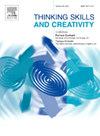Investigating the impact of situational cognition, emotions, and self-efficacy on creative thinking and collaborative intention in metaverse teaching scene
IF 3.7
2区 教育学
Q1 Social Sciences
引用次数: 0
Abstract
The metaverse has emerged as a significant topic in education, with a growing body of literature examining its feasibility and potential benefits for innovative teaching methods, curriculum development, and educational tools. By integrating technologies such as artificial intelligence (AI), blockchain, virtual reality (VR), and augmented reality (AR), the metaverse presents considerable potential for creating customized teaching environments and promoting situated learning. However, current research on the Metaverse Teaching Scene (MTS) primarily involves qualitative discussions, lacking empirical evidence on how MTS influences students' creative thinking and collaborative intentions. This study, grounded in Situated Learning Theory and the Stimuli-Organism-Response (S-O-R) paradigm, explores the factors that affect students' creative thinking and collaborative intentions within MTS. Data were gathered from 316 Chinese university students through questionnaires and analyzed using structural equation modeling (SEM) and artificial neural networks (ANN). The results indicate that contextual cognition factors (e.g., immersion, learning motivation, interactive experience, perceived incentives) in MTS enhance students' self-efficacy and emotional responses, which in turn foster creative thinking and collaborative intentions. Moreover, the study reveals that self-efficacy positively mediates the association between emotions and creative thinking. These findings highlight the crucial role of MTS in advancing situated learning and suggest that educators incorporate MTS to design customized learning environments and activities that boost student engagement and improve learning outcomes.
求助全文
约1分钟内获得全文
求助全文
来源期刊

Thinking Skills and Creativity
EDUCATION & EDUCATIONAL RESEARCH-
CiteScore
6.40
自引率
16.20%
发文量
172
审稿时长
76 days
期刊介绍:
Thinking Skills and Creativity is a new journal providing a peer-reviewed forum for communication and debate for the community of researchers interested in teaching for thinking and creativity. Papers may represent a variety of theoretical perspectives and methodological approaches and may relate to any age level in a diversity of settings: formal and informal, education and work-based.
 求助内容:
求助内容: 应助结果提醒方式:
应助结果提醒方式:


